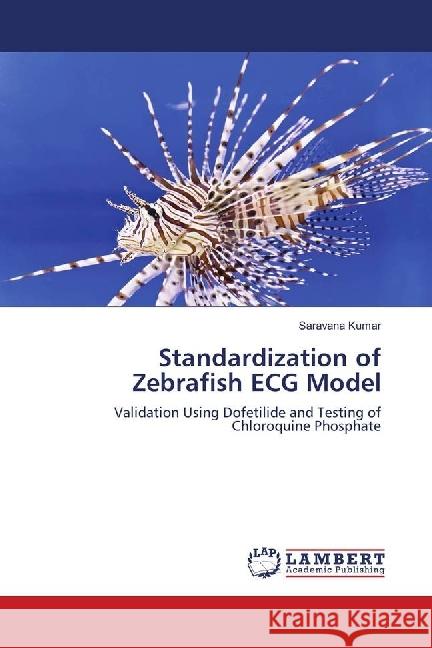Standardization of Zebrafish ECG Model : Validation Using Dofetilide and Testing of Chloroquine Phosphate » książka
Standardization of Zebrafish ECG Model : Validation Using Dofetilide and Testing of Chloroquine Phosphate
ISBN-13: 9783659494178 / Angielski / Miękka / 2018 / 84 str.
Standardization of Zebrafish ECG Model : Validation Using Dofetilide and Testing of Chloroquine Phosphate
ISBN-13: 9783659494178 / Angielski / Miękka / 2018 / 84 str.
(netto: 170,37 VAT: 5%)
Najniższa cena z 30 dni: 178,89
ok. 10-14 dni roboczych
Bez gwarancji dostawy przed świętami
Darmowa dostawa!
Over the last decade, numerous vertebrate models have been identified for genetic as well as toxicological evaluations. Zebrafish, one of the unique vertebrate models, has risen to prominence because of genetic aspects as well as aspects of convenient and ethical experimentation. Danio rerio, a tropical Cypriniform (family Cyprinidae) is commonly called zebrafish because of its striped integument. Zebrafish is native of India (Ganges and Brahmaputra rivers) and extends to Pakistan and northern Mynamar. Zebrafish larva was introduced by George Streisinger in the late 1960s because of high fecundity, external fertilization of eggs and early vision-dependent behaviors (Streisinger et al., 1981). In addition, it was one of the first vertebrate species to have its genome fully sequenced, and many molecular biological methods being developed and made available. During the subsequent 20 years, zebrafish has been established as a relevant model for evaluating the toxicity of environmental pollutants, agrochemicals (Bretuad et al., 2004) and pharmaceutical agents (Hill et al., 2005).











